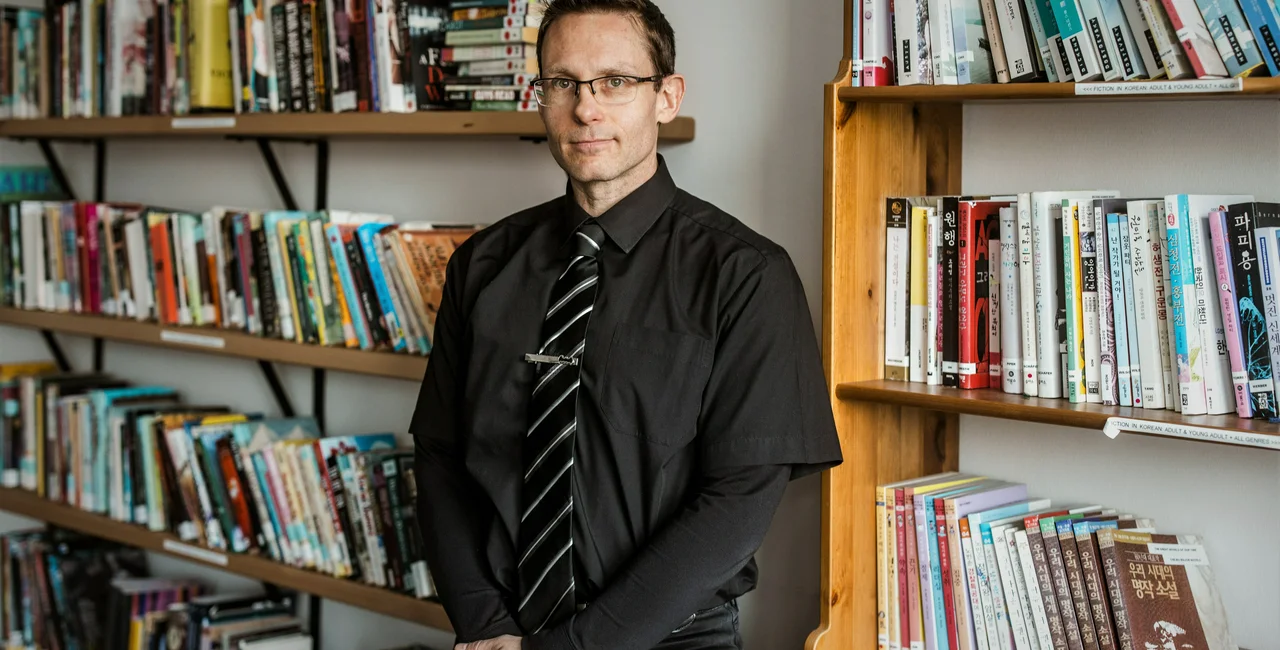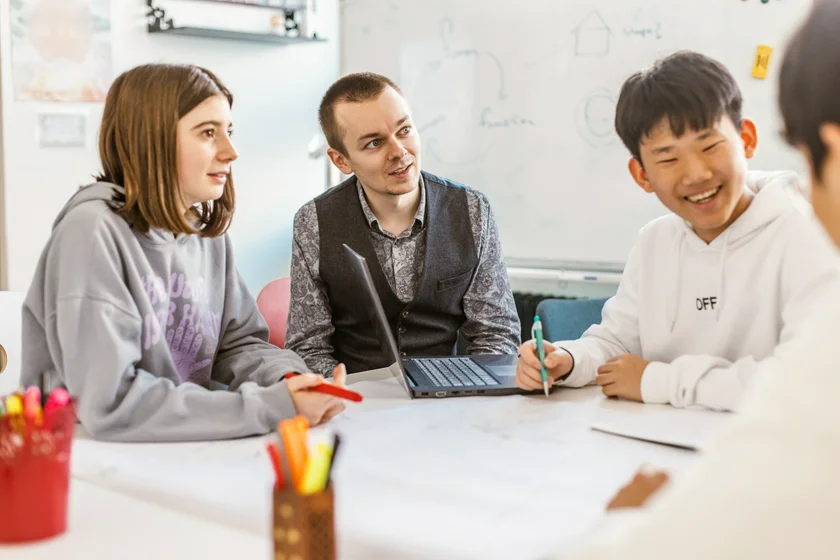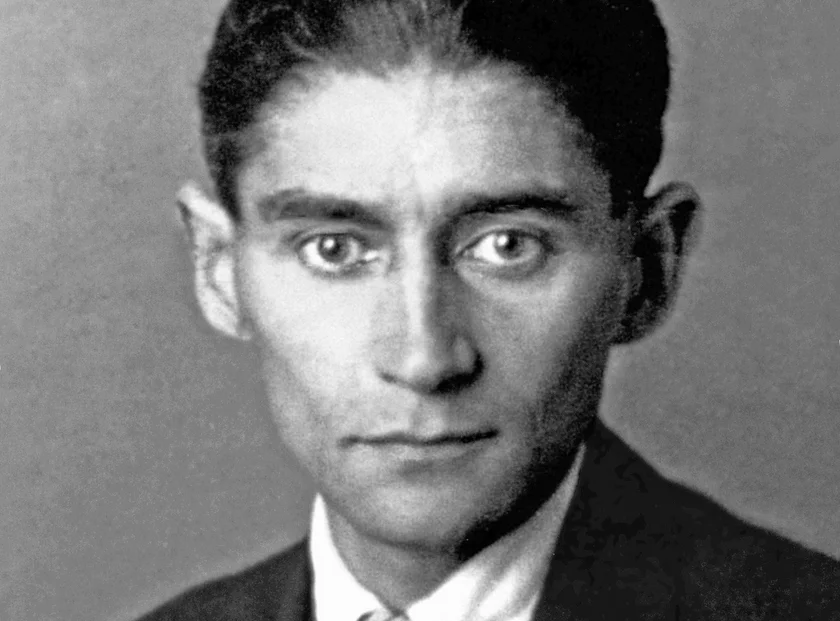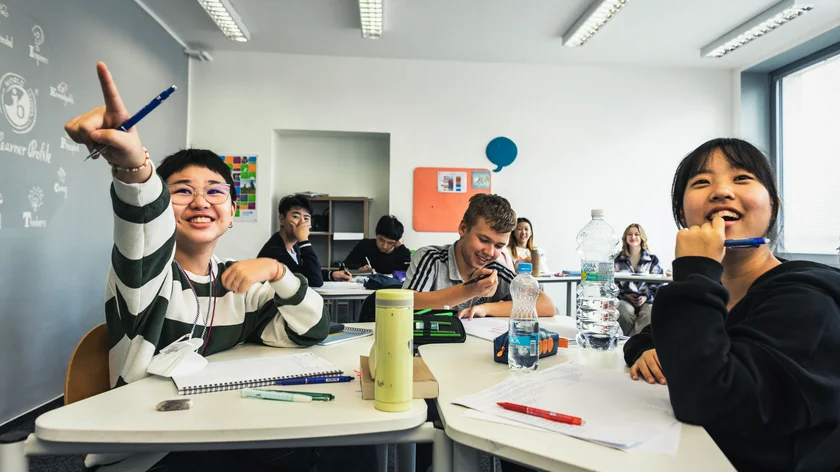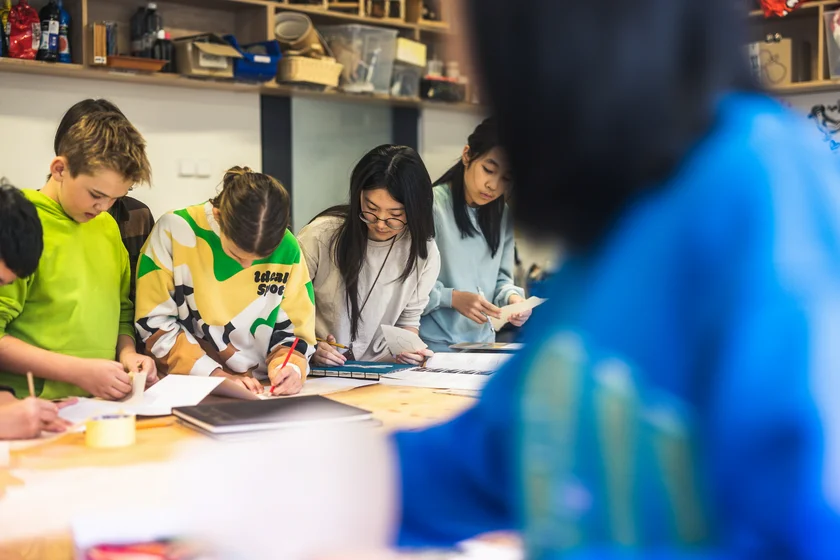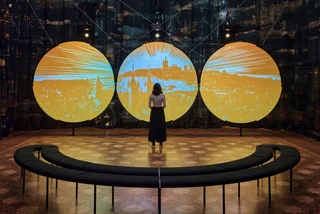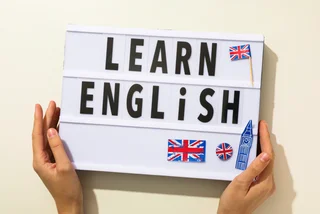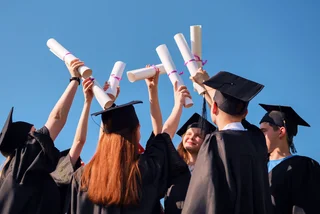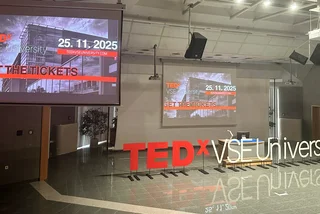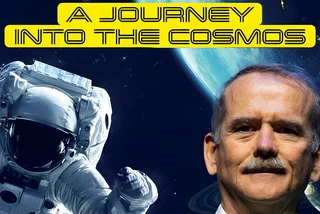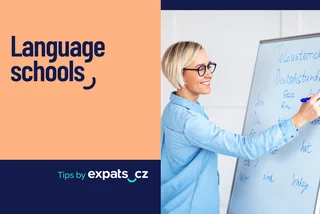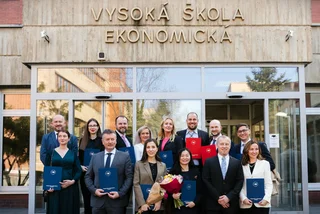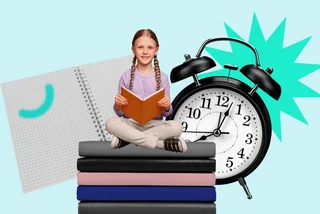When the argument about character broke out and my fifteen-year-old students started standing up and rising to one another’s defense, it wasn’t something I expected to happen, but it was something I had hoped for.
We were at the start of a unit in which we would explore how the conflict between a character’s inward interpretation and outward projection can change the perspective of a story, either within the story itself or as part of our (the reader’s) experience of the story.
Weighty thoughts for a group of students hailing from all over the world, with various levels of English. But the Mission of The Ostrava International School (TOIS) is to help students Discover, Connect and Achieve. We are not interested in merely “covering” the material, but in helping them uncover and discover it for themselves so that they can transfer it to new and unfamiliar situations.
When students can apply their conceptual thinking to understanding and offering solutions to real-world problems, they achieve something well beyond just a mark on their report card.
The Bottle Bias: BTS vs. Bon Jovi
Here's how the Bottle Bias unfolded: a couple of students — we’ll call them BTS — put forth the idea that any element introduced into a story can be a character. The other side — let’s call them Bon Jovi — was arguing that characters must be thinking, speaking entities to have an influence on the story.
One member of BTS grabbed a bottle and said, “This is just a bottle, yes, but once you introduce it into a story, it can become a character.” Bon Jovi countered with, “Only if it grows legs and starts influencing the plot and events.” BTS then declared, “If it’s introduced into the story, it starts influencing things. Otherwise, it wouldn’t be introduced. Therefore, it can be read as a character!”
This went on for a while and I let it, because this was the goal of the lesson: to acquire, develop and deepen knowledge and understanding of common yet complex concepts.
The process was as follows: I had given the students a differentiated task list and a few graphic organizers to work with. The students could determine their own pace, addressing the tasks on the list in the order they chose in as much or as little depth as they wanted, using handouts to visualize and map their thinking.
The final product would be two guided, structured paragraphs, one which developed a statement, elaboration, exemplification, and illustration of character, the other of perspective.
The evolution of Thor, the omission of Olive Oyl
The lesson started off about as you’d expect: students were quiet for a while. Then, some jumped into working on the end goal to get it done — the thinking was obvious: “If the end goal is to write this paragraph if I just write it first then I’m finished!” But then, here and there, voices started arising. Some students had begun mapping out familiar characters they knew and small debates about the nature of those characters were emerging.
There wasn’t anything particularly academic in the initial small discussions about seemingly trivial matters, like what’s gone wrong with the Marvel cinematic universe (as they were discussing the evolution of the character Thor and trying to figure out how to map it), or asking questions about names or quotations (I was genuinely surprised when a student asked about Popeye’s wife’s name).
These discussions, though, became more and more animated. Two students started examining the difference between perspective and point of view.
One asked if he could use his phone to look up a definition. Normally, I wouldn’t have a problem with that, but I explained that I was more interested in seeing what ideas they could come up with on their own before we turned our attention to official definitions.
They moved on. I saw students sketching out their ideas, literally (drawing pictures, for those who felt inclined) and figuratively (creating organizational maps and storms of their thinking).
As it turns out, students actually like thinking.
And when students are thinking, it means there’s a problem or a puzzle that needs solving, and that’s a pretty exciting way to use the brain. Without realising it, they were doing meaningful work and challenging their own understanding of what had previously seemed like fairly cut-and-dry ideas.
Concepts of design. Concepts of human experience.
Concepts, by their nature, are not cut-and-dry. Some concepts are more specific to a particular field of study or discipline (such as character, structure, theme, symbol, motif, etc.,) which Sterns, Aleo, Ferraro, and Duncan call “design concepts” in their book "Learning that Transfers."
The authors also describe other concepts that are much broader and transfer not only across disciplines within academic study, but far beyond the walls of our classrooms, referring to them as “human experience concepts,” which include ideas such as perspective, identity, relationships, conflict, development, and the like.
My job in the classroom is to lead students on journeys to understand the dynamic relationships between these big, transcendent, complicated ideas.
If we were to read Kafka’s "The Metamorphosis" simply for the sake of being able to say we read Kafka’s "The Metamorphosis" we wouldn’t accomplish much. Honestly, my students really won’t care much about the impact of Kafka on 20th-century literature.
But if we are reading it so that we can deconstruct, analyze and understand the relationship between identity development and power structures in familial relationships, suddenly there’s a purpose that goes far beyond fulfilling the curriculum of a Language and Literature course.
It allows students to engage with stories in meaningful, productive, and potentially personal ways that open the doors for them to discover their own abilities in reading, processing, interpreting and, eventually, transferring that understanding out to the so-called "real world."
Students are more likely to remember what they read because they will know why they read it, and they will have developed new skills of interpretation, analysis, and evaluation which will make the next story they read, whether it’s a Harry Potter book or Toni Morrison's "Beloved," that much more meaningful.
The purpose of the classroom is to practice the world
The classroom should be a place where students test their thinking, develop conceptions and challenge preconceptions. It should be a safe place for them to take risks and to learn that failing is part of the journey to success.
I want my students to be able to think about and process the world in critical and creative ways, so my job is to facilitate situations wherein they can puzzle out the world, puzzle out themselves, and puzzle out each other.
Cognitive neuroscience lecturer David Souza points out that every time we learn something new, our brain undergoes a physical change as new synapses are formed. He concludes, then, that the role of the teacher is to be a brain-changer.
The classroom should be a place where students test their thinking, develop conceptions and challenge preconceptions. It should be a safe place for them to take risks and to learn that failing is part of the journey to success.
So when an argument breaks out in the classroom where students are rushing to the defense of the initial antagonist who insists “this bottle can be a character” and other students are rising up in protest of such an idea, all of them are engaged, all of them are being exposed to higher-order thinking skills, and all of them are having their basic assumptions challenged.
Whether they accept these new ideas at that moment, or not, doesn’t matter, because the thinking process is set into motion. They’re using their brains, they’re having fun and they’re constructing creative, original arguments that are going to change how they perceive and interact with the world long after they’ve walked out the doors of my classroom for the last time.
This article was written in association with The Ostrava International School (TOIS) - the only International Baccalaureate Continuum School in the Czech Republic. To read more about our partner content policies see here.












 Reading time: 6 minutes
Reading time: 6 minutes 